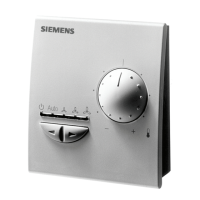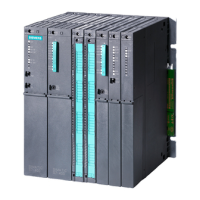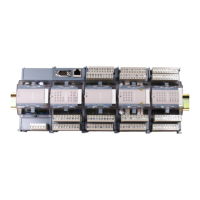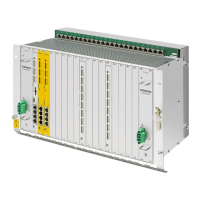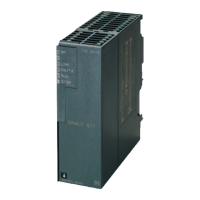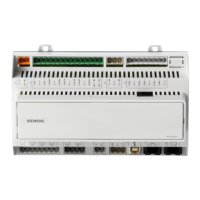Contents
viii System- and communication configuring D7-SYS - SIMADYN D
Edition 12.2003
2.1.4 Operating statuses of a CPU module ..................................................................2-14
2.1.5 Configuring example of a CPU module ...............................................................2-15
2.1.5.1 Task .....................................................................................................................2-15
2.1.5.2 Solution ................................................................................................................2-15
2.1.6 Description and use of the signal transfer mechanisms......................................2-17
2.1.6.1 Data consistency..................................................................................................2-17
2.1.6.2 Data transfer within the same task of a CPU.......................................................2-18
2.1.6.3 Data transfer between various CPU tasks...........................................................2-18
2.1.6.4 Data transfer between cyclic tasks of several CPUs...........................................2-19
2.1.6.5 Data transfer between interrupt tasks of several CPUs ......................................2-20
2.1.6.6 Minimizing the deadtimes ....................................................................................2-21
2.1.6.7 Processing sequence within a basic CPU clock cycle ........................................2-21
2.1.6.8 Interconnection changes and limited number of interconnections ......................2-21
2.1.7 Significance and uses of the process image .......................................................2-23
2.1.7.1 Implementing the process image.........................................................................2-24
2.1.7.2 Process image for cyclic tasks.............................................................................2-25
2.1.7.3 Process image for interrupt tasks ........................................................................2-26
2.1.8 Significance and application of the CPU synchronization ...................................2-27
2.1.8.1 Time synchronization...........................................................................................2-27
2.1.8.2 Synchronizing its own basic clock cycle to the basic clock cycle of a master
CPU......................................................................................................................2-27
2.1.8.3 Synchronizing its own basic clock cycle to an interrupt task of a master CPU ...2-28
2.1.8.4 Synchronizing its own interrupt tasks to interrupt tasks of a master CPU...........2-28
2.1.8.5 Synchronizing several SIMATIC TDC/SIMADYN D stations...............................2-28
2.1.8.6 Response when the synchronization fails ...........................................................2-28
2.1.8.7 Configuring the CPU basic clock cycle synchronization......................................2-28
2.1.8.8 Configuring the interrupt task synchronization ....................................................2-30
2.1.8.9 Example of a synchronization configuration........................................................2-31
2.1.9 Significance of the processor utilization ..............................................................2-31
2.1.9.1 Determining the approximate processor utilization..............................................2-31
2.1.9.2 Calculating the precise processor utilization .......................................................2-32
2.1.9.3 Mode of operation of the task administrator ........................................................2-32
2.1.9.4 Eliminating cycle errors........................................................................................2-34
2.1.10 Technical data of the operating system...............................................................2-34
2.1.10.1 Features...............................................................................................................2-34
2.1.10.2 The basic operating system functions .................................................................2-36
2.1.10.3 The service utility .................................................................................................2-39
2.2 Function description and user instructions ..........................................................2-41
2.2.1 Fatal system error "H"..........................................................................................2-41
2.2.2 Background processing .......................................................................................2-43
2.2.2.1 Online test mode..................................................................................................2-44
2.3 System chart @SIMD ..........................................................................................2-45
3 Communications configuring ...............................................................................................3-1
3.1 Introduction ............................................................................................................3-2
3.1.1 Basic information on communications ...................................................................3-2
3.1.1.1 Overview of the various data couplings.................................................................3-2
3.1.2 Overview of the communication utilities.................................................................3-8
3.1.3 Communication block I/Os.....................................................................................3-9
3.1.3.1 Initialization input CTS ...........................................................................................3-9
